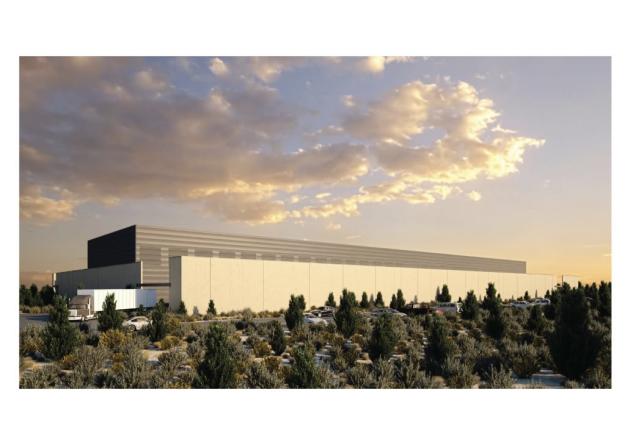 Greenpeace has released a 35-page report detailing the environmental impacts of various data centers around the country, including those of Yahoo, Facebook, Twitter, Google, and Apple. The report, titled How Dirty is Your Data?, takes a look at the footprint that companies are leaving due to the massive amounts of energy they need to power their products and respond to the ever-increasing data demands from their customers.
Greenpeace has released a 35-page report detailing the environmental impacts of various data centers around the country, including those of Yahoo, Facebook, Twitter, Google, and Apple. The report, titled How Dirty is Your Data?, takes a look at the footprint that companies are leaving due to the massive amounts of energy they need to power their products and respond to the ever-increasing data demands from their customers.
“We expect these companies to play a pivotal role in ensuring we move to clean, safe renewable energy system and void future disasters like Fukishima,” the organizations IT policy analyst Gary Cook said.
Greenpeace’s investigation rated cloud companies on how open they were about their data centers, the infrastructure of the data centers themselves, and mitigation strategies. So, how did some of the more notable companies do?
- Greenpeace reasons that Facebook chose North Carolina for its $450 million data center because “cheap and dirty coal-powered electricity is abundant” there, as well as in the Midwest.
- Like most major companies, Facebook is privy to some generous tax breaks on its North Carolina facility. Over 10 years, the company will receive $17 million in local subsidies and tax breaks.
- The Forest City, North Carolina plant is powered by nuclear energy, of which there are a variety of concerns: How to deal with radioactive waste in the long-term, carbon emissions, expense, etc.
- Facebook “is reported to be” using a San Jose, California data center that is trying to eliminate the reliance on coal power and promotes using renewable energy sources. Despite this, the organization says it “appears to lack vision to become a company powered by clean energy.”
- Grades: Transparency – D, “Facebook has yet to provide any data on its energy consumption or related GHG emissions at either a corporate or facility level…”; Infrastructure siting – F, “Facebook’s first two siting decisions have led it to locations and utilities (Oregon and North Carolina) that rely on coal as the primary source of electricity, with nuclear a close second in North Carolina”; Mitigation – D, “…beyond efforts to improve electrical efficiency, Facebook has not provided any additional mitigation strategies.”
- Google is also guilty of building data centers in areas where cheap, coal-powered electricity is easy to come by.
- Google’s North Carolina data center is estimated to consume somewhere between 60 and 100MW. This facility will benefit from $212 million in tax breaks over 30 years.
- The company is in the process of purchasing a wind energy company in Iowa, and will retire the renewable energy credits it will earn from the deal.
- Google attempts to give incentives for clean energy choices and discourages against coal when possible; example: Data centers that rely on hydroelectricity, and a focus on creating more energy-efficient web servers.
- Grades: Transparency – F, “Google fails to disclose information on its energy use or GHG emissions”; Infrastructure siting – C, “While Google has built sizable data centres [sic] attached to clean energy sources…its recent investments in North Carolina, South Carolina, and Oklahoma indicate that tax incentives and access to inexpensive dirty energy make sense to Google”; Mitigation – B, “Google has played a useful role in advancing discussion within the sector by highlighting the energy efficiency measures of its data centres [sic].”
Yahoo
- The company aims to reduce carbon emissions from its data centers by 40-percent by 2014, with facilities based on renewable energy and improved design; like Google, Yahoo has a facility using hydroelectricity .
- Grades: Transparency – D, “Yahoo and the sector would be well served by its sharing of the metrics it is using to track its carbon reduction goals”; Infrastructure siting – B, “Yahoo’s recent data centre [sic] siting decisions have put [it] on a cleaner energy path”; Mitigation – C, “Yahoo should shift [its goal of 40-percent carbon reduction] to an absolute reduction target.”
Apple
- Apple is also guilty of using the cheap coal-powered electricity of the Midwest and North Carolina. Its new North Carolina facility is estimated to use 100MW of power.
- North Carolina will give Apple $46 million in tax breaks, plus it also will benefit from a 50-percent break in real estate taxes and 85-percent break in person property taxes.
- Grades: Transparency – C, “Although Apple has become increasingly transparent about the environmental footprint and operational performance of its products…it has not been as forthcoming on the current or expected impacts of its online products”; Infrastructure siting – F, “[Its iDataCenter in North Carolina] indicates a lack of a corporate commitment to clean energy supply for its cloud operations”; Mitigation – C, “Apple has not declared a renewable energy or greenhouse gas target to shape this commitment [to renewable energy and green power].”
- Twitter generates over 8 terabytes of data a day, and is only getting bigger
- Grades: Transparency – F, “Twitter does not participate in the Carbon Disclosure Project”; Infrastructure siting – F, “[Moving] from San Jose to Utah, which has an electric utility mix that is 97 percent fossil fuel-based as compared with 27 percent renewable, is a huge step backwards”; Mitigation – F, “A move to Utah’s coal intensive electricity grid means that Twitter has its work cut out for it to mitigate the footprint of its new facility.”


